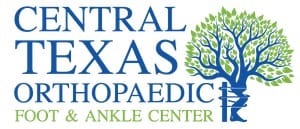Common Diagnoses:
Midfoot Arthritis
Midfoot Arthritis Overview
Midfoot arthritis is characterized by pain and swelling in the midfoot, aggravated by standing and walking. There is often an associated bony prominence on the top of the foot. Usually the symptoms develop gradually over time, although it can occur following a major midfoot injury, such as a Lisfranc injury. Non-operative treatment consisting of use of a stiff-soled comfort shoe, activity modification, and weight-loss, can be quite effective. If non-operative treatment fails, patients may benefit from surgery to fuse the arthritic midfoot joints.
Midfoot Arthritis Symptoms
Patients with midfoot arthritis will experience discomfort over the middle of the foot, often during long periods of standing or walking. This discomfort may get worse when wearing shoes, especially if the shoe rubs on a bony prominence on the top of the foot. You may have pain while “toeing-off” (transitioning from heel to toe) during walking, or when you take your first few steps in the morning or after sitting (also known as “start-up” pain). The pain may get worse with weather changes.
Midfoot Arthritis Diagnosis
Your doctor physically examines your midfoot for pain and inflammation. The exact location and severity of the pain are essential to identify the type and the extent of the damage. Your doctor will also take your medical history and may order an X-ray or CT-scan or MRI to confirm the diagnosis.
Midfoot Arthritis Treatment
The non-surgical treatment options include: Pain medicines and anti-inflammatory drugs including corticosteroids Wearing comfortable shoes Avoiding excess strain to the affected foot Participating in swimming and use of a stationary bike Practicing strengthening exercises The bones that are causing the foot pain are fused surgically by a midfoot fusion to minimize the rubbing of bones against each other.

